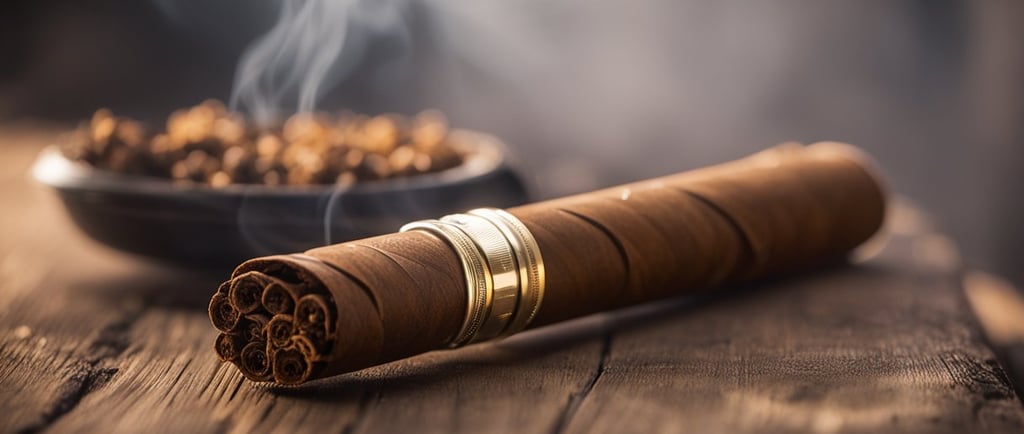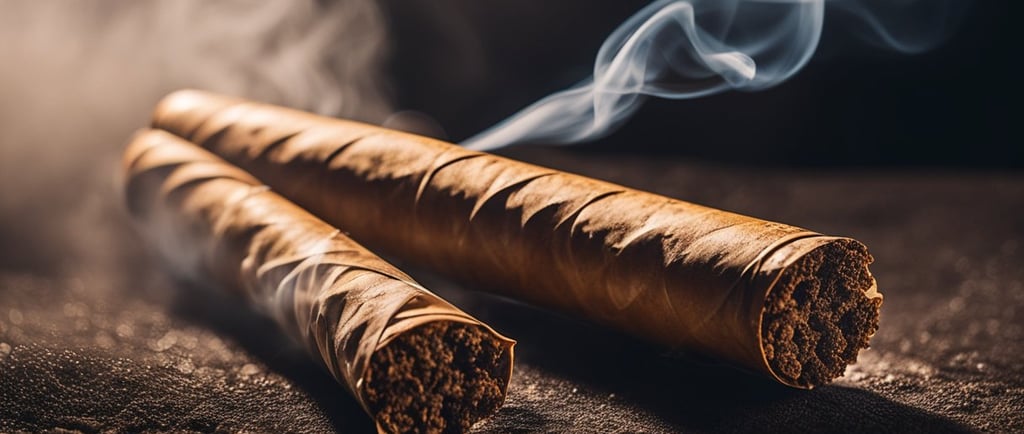Why Humidity Matters: How It Affects Your Cigar's Flavor
FOR CIGARS – EVERYTHING ABOUT MAINTAINING THE PERFECT CIGAR STORAGE


Have you ever lit up a cigar only to find it burns unevenly or tastes off? The culprit might be humidity. Proper humidity levels between 65-72% are crucial for preserving a cigar's flavor profile, burn rate, and overall smoking experience.
Cigars are hygroscopic, meaning they absorb and release moisture from their environment. Too much humidity can make them soggy and difficult to light, while too little can dry them out and create a harsh, bitter taste. This delicate balance affects everything from the tobacco oils that carry flavor to how evenly your cigar burns.
Understanding Humidity and Its Impact on Cigars
Humidity plays a crucial role in determining the quality, flavor, and overall smoking experience of cigars. Proper moisture levels affect everything from a cigar's burn characteristics to its complex flavor profile.
The Role of Humidity in Preserving Cigar Quality
Tobacco leaves are naturally hygroscopic, meaning they absorb and release moisture from their surroundings. This property makes cigars particularly sensitive to their environment.
In dry conditions, cigars lose essential oils that carry flavors and aromas. This results in a harsh, bitter smoke with diminished complexity.
Proper humidity maintains the cigar's natural oils and ensures a balanced, flavorful experience. Well-humidified cigars burn evenly and produce a clean, white ash—signs of quality tobacco and proper storage.
Humidity also affects the physical structure of cigars. Too dry, and the wrapper can crack or unravel. Too humid, and the tobacco expands, potentially causing wrapper damage or difficult draws.
Humidity Levels: Optimal Ranges for Cigar Storage
The industry standard for cigar storage is 65-72% relative humidity at approximately 70°F (21°C). This range is often referred to as the "70/70 rule."
Different cigar types may benefit from specific humidity levels:
Cuban cigars: 62-65% humidity
Non-Cuban cigars: 65-70% humidity
Larger ring gauge cigars: 65-68% humidity
Seasonal adjustments might be necessary. During winter months when indoor heating creates drier conditions, aim for the higher end of the range.
Consistency is as important as the actual humidity level. Fluctuations can cause the tobacco to expand and contract, potentially damaging the wrapper and affecting flavor.
Modern humidification systems use either traditional sponges, silica-based crystals, or two-way humidity control packets to maintain optimal conditions.
How Humidity Influences Cigar Flavor and Combustion
Humidity directly impacts how cigars burn and taste. The moisture content affects the tobacco's chemical composition, which in turn influences the flavor compounds released during smoking.
Flavor Profile Changes due to Humidity Variations
Cigars stored in too-dry conditions (below 65% humidity) often lose essential oils and flavors. These cigars tend to burn hot and fast, producing harsh, bitter smoke with diminished complexity. The tobacco becomes brittle and deteriorates quickly.
Properly humidified cigars (65-72% humidity) maintain their oils and sugars, resulting in balanced flavors. The tobacco releases its intended taste notes gradually, creating a smooth, nuanced smoking experience. The maker's flavor profile remains intact.
Overly humid cigars (above 75% humidity) develop musty, ammonia-like flavors. The excessive moisture prevents proper fermentation and aging. This creates an unpleasant taste profile with muted flavor complexity and sometimes sour notes.
Combustion Quality and the Role of Proper Humidification
Dry cigars burn too quickly and unevenly. They often produce excess heat that can scorch the tobacco, creating an unpleasant harshness. The wrapper may crack or unravel, and tunneling (when the center burns faster than the outside) is common.
Properly humidified cigars maintain an even, controlled burn. The ember progresses steadily at about ¼ inch per minute in ideal conditions. The ash holds firmly and appears light gray or white, indicating complete combustion.
Cigars with excessive humidity struggle to stay lit. They require frequent relighting and produce less smoke. This creates a frustrating experience with canoeing (uneven burning down one side) and an inconsistent draw that feels tight or plugged.
Best Practices for Humidity Control
Proper humidity control is essential for preserving cigar quality and enjoying the best smoking experience. The right approach combines selecting appropriate equipment, maintaining stable conditions, and regular monitoring.
Choosing the Right Humidification System
Humidors come in various types, each suited for different needs. Desktop humidors work well for small collections of 20-50 cigars. They typically use sponge-based humidifiers or gel crystals.
Cabinet humidors accommodate larger collections and provide more stable environments. These often use electronic humidification systems for better precision.
For serious collectors, walk-in humidors offer the ultimate control but require significant investment.
Humidification options:
Analog systems: Sponges, crystals, beads (65-72% RH)
Electronic systems: Digital control, greater accuracy (±1% RH)
2 way humidity packs: Pre-calibrated humidity packets (available in 62%, 65%, 69%, 72%, 75%)
Choose a system that matches your collection size, budget, and maintenance preferences.
Maintaining Consistent Humidity Levels
Consistency is key for proper cigar aging. Aim to keep humidity between 65-72% for most cigars. Cuban cigars often benefit from slightly lower humidity (62-65%).
Avoid rapid fluctuations, which can cause wrappers to crack or expand. Place your humidor away from direct sunlight, heating vents, and exterior walls.
Seasonal changes require adjustments. During winter, indoor heating reduces humidity, so you may need additional humidification. Summer often brings higher humidity levels, requiring less active humidification.
Always season new humidors properly before adding cigars. This process can take 3-7 days but ensures the wood won't absorb moisture from your cigars.
Regular Monitoring and Adjustments
Use a reliable hygrometer to check humidity levels. Digital hygrometers offer greater accuracy than analog models and should be calibrated every 6 months.
Check readings 2-3 times weekly. Look for trends rather than single readings to identify issues before they affect your cigars.
Troubleshooting common problems:
Too dry (below 62%): Add distilled water to humidifier, check for leaks
Too humid (above 75%): Open lid periodically, reduce water in humidifier
Fluctuating levels: Check seal integrity, move humidor to stable location
Keep a log of readings and adjustments to identify patterns. This record helps you understand your humidor's behavior across seasons and environments.


